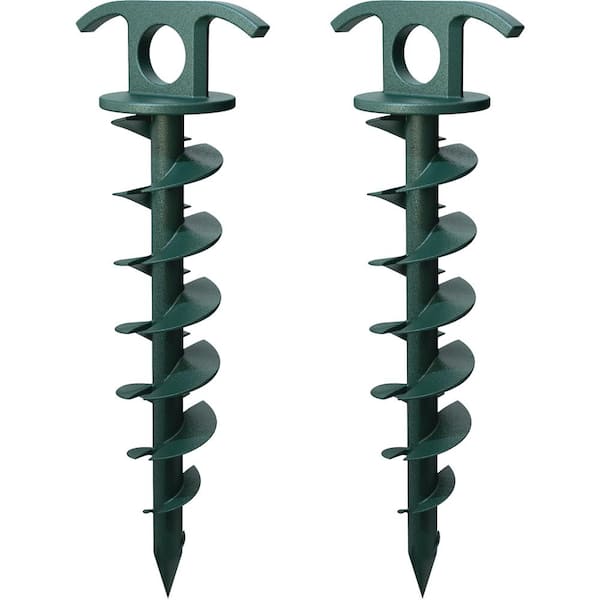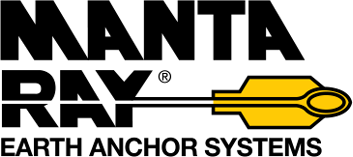How to Choose the Best Ground Anchor for Outdoor Use
How to Choose the Best Ground Anchor for Outdoor Use
Blog Article
Explore the Various Kinds Of Ground Anchor for Your Next Project
From auger anchors, which stand out in varied soil problems, to risk anchors developed for temporary installations, the options are various. In addition, concrete and screw supports existing special benefits in certain scenarios, while deadman supports are tailored for applications requiring resistance to lateral forces.

Auger Anchors
Auger anchors are a preferred choice in numerous building and landscape design projects due to their distinct design and reliable anchoring capabilities. These anchors contain a helical screw-like shaft that is driven into the ground, permitting a secure and stable hold. The spiral design facilitates simple installation and maximizes resistance against side pressures, making auger anchors specifically effective in applications such as fence, short-term structures, and disintegration control.
The installation procedure of auger anchors is reasonably uncomplicated. Auger supports can be conveniently gotten rid of and reused, which includes to their cost-effectiveness and sustainability.
One of the substantial advantages of auger anchors is their capability to distribute loads equally across the bordering soil, minimizing the threat of dirt disruption and reducing environmental impact. Furthermore, they are less susceptible to loosening up or heaving in time compared to standard anchoring methods. Auger anchors are an outstanding option for projects calling for sturdy and dependable anchoring solutions.

Risk Anchors
When it concerns protecting frameworks in a selection of exterior applications, stake supports offer a trustworthy and simple service. These supports are usually built from resilient materials such as steel or aluminum, designed to endure ecological stress and anxieties while offering optimum stability. Their simple design permits quick setup, making them an ideal choice for irreversible or temporary anchoring requirements.
Stake supports are especially beneficial in protecting camping tents, canopies, and other lightweight structures versus wind and climate. They operate by being driven into the ground at an angle, creating a strong hold that withstands pull-out forces - Ground Anchor. The effectiveness of stake supports depends upon several factors, including dirt kind, wetness web content, and the angle of installment
For included safety, numerous risk anchors feature add-on points for ropes or straps, enabling stress modifications as required. In applications such as landscape design or building, they can efficiently support tools or structures on uneven surface. Overall, stake anchors give a flexible and cost-efficient remedy for securing different outdoor installations, making them a favored selection for contractors and DIY lovers alike.
Concrete Anchors
Concrete supports give a durable remedy for safeguarding frameworks to concrete surfaces, guaranteeing security and safety and security in different applications. These anchors are essential for projects ranging from residential buildings to massive commercial setups. They can be found in various types, including development supports, sticky supports, and undercut anchors, each made for particular load demands and ecological conditions.
Sticky supports make use of high-strength epoxy or material to bond the anchor to the concrete, providing remarkable load-bearing abilities, particularly in broken concrete scenarios. Undercut anchors create a special form within the concrete, providing extraordinary holding power, especially in applications where tensile tons are prevalent.
When executed appropriately, concrete anchors significantly improve the structural honesty of different jobs, making them crucial in contemporary building and construction practices. Comprehending the details needs of your task will assist in picking the right type of concrete support for the job.
Screw Anchors

Screw anchors are a flexible securing service that can be successfully used in a range of applications where traditional concrete anchors may not be sufficient. These supports contain a helical layout that permits them to be quickly driven right into the ground, making them optimal for use in soil and various other substratums. Their unique structure provides outstanding holding power and resistance to pull-out pressures, making them ideal for countless projects, from landscape design to click to find out more architectural support.
One of the main benefits of screw anchors is their ease of installment. They need marginal tools and can commonly be set up without the demand for excavation, which conserves both time and labor costs. Furthermore, screw supports can be gotten rid of and recycled, offering a sustainable service for temporary applications.
Screw supports are especially useful in locations where dirt conditions are challenging, such as loosened or sandy soils. Their capability to be installed at click this site differing depths enables for modification based on certain task demands. Overall, screw supports provide a trusted and effective anchoring approach, making them an exceptional selection for specialists and engineers seeking efficient remedies for their projects.
Deadman Anchors
Deadman anchors function as a durable solution for maintaining structures in challenging conditions, especially where standard anchoring techniques may drop short. These supports include huge, hefty things hidden underground, which produce resistance against side forces. The design generally involves a horizontal component, such as a block of concrete or a steel plate, buried in the dirt, to which bands or wires are connected.
The performance of deadman supports depends on their capability to disperse tons over a bigger area, decreasing the risk of failing in unsteady soil problems. They are especially beneficial in applications such as preserving wall surfaces, short-term frameworks, and slope stabilization, where dirt activity can jeopardize the stability of the framework.
Installation of deadman anchors calls for cautious preparation to ensure they are placed at the right deepness and orientation, maximizing their load-bearing capacity. While they may call for even more labor and product than lightweight supports, their reliability in negative problems makes them very useful for long-term tasks. Deadman anchors are flexible and can be adapted to various applications, making them a go-to option for engineers encountering unique difficulties in their jobs.
Final Thought
In recap, selecting the appropriate kind of ground anchor is essential for guaranteeing stability and protection in different tasks. Auger supports master varied dirt problems, while stake anchors suit short-lived applications. For concrete surface areas, expansion and sticky supports offer reliable choices, and screw supports provide adaptability in tough terrains. Deadman supports are specifically efficient in withstanding lateral forces for maintaining walls. Cautious factor to consider of these options will certainly improve job outcomes and structural stability.
In addition, concrete and screw supports existing one-of-a-kind benefits in specific situations, while deadman supports are customized for applications needing resistance to lateral forces - Ground Anchor.Auger anchors are a preferred choice in different building and website link construction and landscaping jobs due to their one-of-a-kind design and efficient anchoring abilities. They come in various kinds, consisting of development anchors, glue supports, and undercut supports, each developed for specific load demands and ecological conditions
Adhesive supports make use of high-strength epoxy or resin to bond the anchor to the concrete, using superior load-bearing capacities, specifically in fractured concrete situations. Generally, screw supports provide a trusted and effective anchoring approach, making them an exceptional option for designers and contractors looking for efficient remedies for their jobs.
Report this page